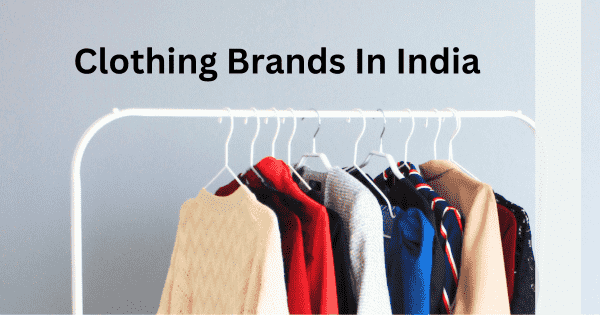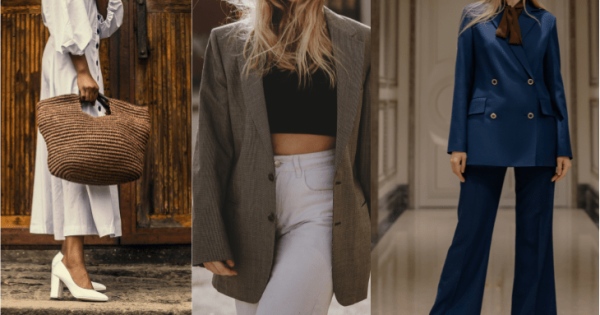Clothing Brands in India,Consumers in India change their clothing preferences frequently. The clothing choices that were firmly anchored in the vastness and complexity of Indian culture are now aligning with more sophisticated and globally in-vogue styles. आधुनिक भारतीय कपड़ों में पहले से कहीं अधिक विविधता और बाजार क्षेत्र मौजूद हैं। औपचारिक, अर्ध–औपचारिक, आकस्मिक, पुष्ट, जातीय, मौसमी, अवकाश, पार्टी के कपड़े, और अधिक श्रेणियां शामिल हैं। This change is the result of Indian consumers’ extensive exposure.
With a median age of 27 years and the largest Gen Y population in the world, Indian consumers are more open to trying new things and are more tolerant of other people’s cultures and social mores. यह देखते हुए कि उन्होंने कम उम्र में पैसा कमाना शुरू कर दिया था, वे अधिक समय–गरीब और आर्थिक रूप से समृद्ध हैं और इसलिए उनके पैसे को बेहतर और अधिक महत्वाकांक्षी चीजों पर खर्च करने की अधिक संभावना है। These behavioral, societal, and psychographic shifts are also reflected in how much clothing they buy.
Over the following ten years, India’s economy is predicted to grow at a CAGR of 7 to 9%, which will result in higher per capita income. उपभोक्ताओं के पास खर्च करने के लिए अधिक पैसा होगा और बटुए का आकार बढ़ने पर वे कपड़े खरीदने के लिए अधिक उत्साहित होंगे. By 2023, clothing spending per person is projected to increase from INR 3,900 in 2018 to INR 6,400. As a result, it is anticipated that by 2023, total Indian garment consumption expenditures will increase to INR 9.35 lac crores.
Additionally, as the market for women and children expands quickly, both its size and its structure will alter.
Both the changes in the Indian economy and their effects on the garment sector are made clear. इसका नए और स्थापित कपड़ा और वस्त्र उद्योग संगठनों दोनों के लिए महत्वपूर्ण प्रभाव है। The aforementioned macroeconomic shifts will influence trends in clothes indian consumption, creating considerable business potential.
Five major consumer trends that are influencing the Indian garment market and offering substantial potential for both new and current firms have been highlighted by fashionrye. The diverse cultural heritage of India is beautifully reflected in its clothing traditions, which have evolved over centuries. भारतीय परिधान केवल फैशन और शैली के बारे में नहीं है; यह क्षेत्रीय सौंदर्यशास्त्र, शिल्प कौशल और मूल्यों के समृद्ध चित्रपट का प्रतिनिधित्व करता है। In recent years, Indian clothing consumption trends have witnessed a fascinating blend of tradition and modernity. आइए इस जीवंत दुनिया में तल्लीन हों और देखें कि यह देश के फैशन परिदृश्य को कैसे आकार दे रहा है।
Purchase Clothing at the lowest Price: Click Here
Purchase BIBA Brand Clothing at the lowest Price: Click Here
Purchase Aurelia Brand Clothing at the lowest Price: Click Here
Purchase W Brand clothing at the lowest Price: Click Here
Purchase Libas Brand clothing at the lowest Price: Click Here
Trend 1: Expanding Economy & Value Segment Market

People in India are moving from rural to urban areas at an accelerating rate in quest of improved employment opportunities and educational opportunities. In 2018, urban areas were home to 33% of India’s population, up from 31% in 2010. 38% of India’s population is anticipated to reside in urban regions by 2023. चूंकि 2001 और 2011 के बीच शहरी आबादी में 32% वृद्धि कस्बों के पुनर्वर्गीकरण और शहरी क्षेत्रों के विस्तार के कारण हुई थी, इसलिए शहर भी आस–पास के गांवों को घेर कर बढ़ रहे हैं। The working population is getting bigger and engaging in different types of occupations as a result of urbanization. The working population has rising incomes and a shift in attitude towards improved appearance.
Additionally, metropolitan services and ways of life are migrating to rural areas. A decade ago, agriculture made up nearly half of the rural GDP; today, it makes up only about one-fourth and is falling each year. पिछले दस वर्षों में, ग्रामीण अर्थव्यवस्था, जो कभी कृषि पर हावी थी, पहले से ही विनिर्माण और सेवा–आधारित क्षेत्रों को शामिल करने के लिए विस्तारित हो गई है।
Together The middle class is expanding due to urbanization and urbanization, and these new consumers’ demands are changing the dynamics of the garment sector. 2023 तक, मध्यम वर्ग की आबादी, जो लक्षित बाजार का 43% हिस्सा होगी, वैश्विक परिधान बाजार का लगभग 55-60% हिस्सा होगा। Due to the existence of both middle-class and wealthy consumers, top-tier cities will continue to dominate the apparel market. However, two-thirds of this middle class will reside in the middle tiers, smaller cities, and significant district towns, which have emerged and will continue to emerge as highly desirable clothing markets.
Fusion Fashion: One prominent trend in Indian clothing consumption is the rise of fusion fashion. Traditional Indian garments like sarees, lehengas, and kurtas are being reimagined and infused with modern elements to create a unique blend. भारतीय और पश्चिमी शैलियों के मिश्रण ने युवा पीढ़ी के विकसित होते स्वाद को पूरा करने के लिए कई रोमांचक विकल्पों को जन्म दिया है।
Compared to aspirers, middle-class consumers spend more on discretionary
clothing consumption. Only a small number of Indian clothing stores and brands, however, have a thorough understanding of the needs of middle-class shoppers.
भारत में मध्यम वर्ग मूल्य–सचेत है, फिर भी वे आकर्षक कपड़ों की इच्छा रखते हैं। वे गुणवत्ता और डिजाइन के आदर्श संयोजन की तलाश करते हैं। As a result, middle-class customers in India are creating an opportunity that must be seized with “economy and value fashion.”
Trend 2: Women’s & children’s clothing driving market expansion

In Indian homes, the place of women is evolving as they make greater contributions to the household. Their impact on family decision-making is growing along with their wealth. As family work is redefined as a result of urban living demands, even women who do not work are venturing outside of their homes and assuming male tasks and responsibilities. The girl kid is gradually being encouraged to accomplish more and achieve higher, although this may be more apparent in metropolises and larger cities. संक्रमण छोटे शहरों और ग्रामीण क्षेत्रों में भी हो रहा है। नई पीढ़ी की महिलाएं अपने जीवन में इस संपूर्ण परिवर्तन के परिणामस्वरूप अपनी उपस्थिति के बारे में अधिक आत्म–जागरूक और सचेत हैं, जो महिलाओं के कपड़ों की मांग को बढ़ा रही है।
This results in increased spending on clothing, a shift towards ready-to-wear rather than hand-stitched clothing, and a rise in the popularity of Western casual clothing (denim, T-shirts, tops, etc.) in semi-urban and small-town areas.
The number of women entering the workforce is steadily rising in India’s urban areas thanks to the booming professional sectors, where working conditions are more supportive of women and hiring practices are more gender diverse. औसत कार्यकाल उसी समय बढ़ रहा है जब स्कूल छोड़ने वाली महिला पेशेवरों का प्रतिशत घट रहा है। Therefore, the desire to look better and the requirement to dress smartly are encouraging urban women to adopt Western clothing more and more. As a result, the market for women’s Western clothing is growing and becoming more widely accepted in urban regions.
With novel fabrics and stylized shapes, women’s Western wear is moving beyond denim and Western casuals to reflect the changing urban environment.पश्चिमी कपड़ों की ओर बढ़ते बदलाव को भुनाने के प्रयास में व्यापारियों और व्यवसायों की बढ़ती संख्या महिलाओं के लिए फैशनेबल स्मार्ट कपड़ों का उत्पादन कर रही है, जिसमें ऑफिस वियर और पार्टी वियर शामिल हैं। Even Indian traditional dress is changing, with silhouettes moving more and more in the direction of “contemporary clothing.” This development may be seen in the expansion of both national brands like “W” and global brands like Zara.
Additionally, metropolitan women’s perceptions of undergarments have changed. They no longer buy innerwear as a need or as a practical item. Modern innerwear is more closely linked to the goals and wishes of metropolitan women than it is to practicality or necessity. Therefore, the market for women’s Western clothing and undergarments presents significant development and investment potential.
Sustainable and Handcrafted Clothing: With growing environmental awareness, there is a shift towards sustainable and handcrafted clothing. उपभोक्ता प्राकृतिक और पर्यावरण के अनुकूल सामग्री से बने कपड़ों की मांग कर रहे हैं।
They are also showing a keen interest in handloom fabrics, supporting local artisans and reviving age-old weaving techniques.
The urban Indian market for children’s clothing has benefited from the changes in urban women’s lives. महिलाओं की फैशन वरीयताओं में बदलाव अंततः उनके बच्चों के फैशन स्वाद में भी बदलाव का अनुवाद करता है।
In the past, urban customers were extremely price-conscious and did not regard “brand name” as a significant factor when purchasing children’s clothing.
Trend 3: Consumer Wardrobes Focus on Functionality and Fashion

The urban consumer’s way of life has undergone a significant transformation. As a result, there are now more occasions and factors driving garment consumption. शहरी ग्राहक अब एक निश्चित उद्देश्य या उपयोग के लिए कपड़े खरीदते हैं, जैसे व्यापार मीटिंग्स के लिए सादे शर्ट, सामाजिक सभाओं के लिए चेकर्ड या धारीदार शर्ट, और रात के समय पार्टियों के लिए रोमांचक डिजाइन वाली शर्ट। इसी तरह कुछ कारक भी कपड़ों की खरीदारी को प्रेरित कर सकते हैं। Urban consumers often purchase clothing for its functionality or performance, therefore businesses have developed clothing lines with features like shape retention, stain resistance, odor control, quick-drying, etc.
The aforementioned changes are forcing clothing designers and retailers to think beyond the foreseeable utilitarian requirements of urban consumers. ब्रांड और खुदरा विक्रेता प्रदर्शन पहलुओं को डिजाइन कर रहे हैं जो एक ओर कपड़ों की खपत को प्रोत्साहित करेंगे, वहीं दूसरी ओर वे ग्राहकों के जीवन में नए अवसर पैदा कर रहे हैं और उन्हें पूरा कर रहे हैं। Here are some instances of traditional clothing making a breakthrough:
- Contrary to typical commuter jeans, biker jeans include integrated armor pockets at the knees and hips and great whole-length abrasion resistance.
- Ably Apparel is an environmentally conscious company that has created clothing made of 100% cotton that has been activated with the FiliumTM technology, which makes natural materials repel liquids, stains, and odors.
While utility continues to drive consumption, urban consumers’ desire to seem more stylish outweighs all other variables in driving sales for clothing brands and retailers.
Urban customers view clothes as a means of self-expression in addition to seeing them as a useful buy. वे इसे अपने चरित्र और स्थिति की अभिव्यक्ति के रूप में देखते हैं। शहरी ग्राहक नवीनतम फ़ैशन रुझानों के साथ अद्यतित रहने के प्रयास में उनके Facebook पोस्ट, Instagram फ़ीड और सामाजिक मंडलियों से प्रभावित होते हैं. As a result, increasing numbers of urban customers purchase clothing in accordance with current fashion trends and designs as well as the aspirational buying principle. Brands and merchants who quickly adapt catwalk fashion trends to their stores entice them.
Trend 4: A resurgence of custom-fit clothing

Due to the popularity of ready-made clothing among Indian men who are young and in the workforce, the menswear market in India shifted from clothing that was custom-made to clothing that was already created. हालाँकि, अधिक से अधिक पुरुष जो प्रीमियम या लक्ज़री रेडीमेड कपड़ों की खरीदारी कर रहे हैं, कंपनियां एक शर्ट या एक जोड़ी पैंट पहनने की इच्छा रखती हैं जो उन्हें बिल्कुल फिट हो, कस्टम–फिट कपड़ों का चलन वर्तमान में भारत में पुनर्जीवित हो रहा है।
Any garment that has been altered to fit a buyer based on his or her measurements is referred to as custom-fit apparel. and fashions. Made-to-measure and Bespoke Tailoring are the two categories of custom-fit clothing. When clothing is produced to order, standard patterns are altered to meet the buyers’ measurements. भले ही कस्टम कपड़े रेडी–मेड कपड़ों की तुलना में अधिक आराम से फिट होते हैं, फिर भी यह ग्राहक के माप के अनुसार बिल्कुल निर्मित नहीं होता है। हालांकि, बीस्पोक टेलरिंग के फिट होने की कोई तुलना नहीं है। Customers must select from a variety of body shapes, fabrics, cuffs, collars, pockets, and buttons along with the standard size measurements in this. A pattern is created for the garment once all the details are decided, with which it is developed and put together. Bespoke tailoring, therefore, gives greater exclusivity than made-to-measure.
Trend 5: Top clothing Brands in India that Put Digital First

Whether they live in urban or rural locations, more and more people are able to shop online thanks to the expanding access to digital devices and the internet. समृद्ध, आकर्षक और अनुकूलित खरीदारी का अनुभव जो आजकल एक ऑनलाइन स्टोर अपने ग्राहकों को प्रदान करता है, उद्योग की सफलता का एक महत्वपूर्ण कारक है।
The opportunity to create digitally driven fashion firms is also expanding as online clothes sales increase. The large young population with access to technology and a desire to be fashionable will be the success factor for digitally driven fashion firms. Given that “content” is the sole thing that drives the internet, these brands will need to master it. इन ब्रांडों के पास अपनी ब्रांड पहचान को मजबूत करने के लिए सावधानीपूर्वक चुनी गई सामग्री के प्रभाव का उपयोग करने का अवसर होगा। वे जनता के साथ ताजा फैशन प्रेरणा और विचार साझा करेंगे और विपणन और वितरण मंच के रूप में विस्तारित सोशल मीडिया का सफलतापूर्वक उपयोग करेंगे। Additionally, a digitally driven fashion firm will be able to reach a broad customer base at very minimal prices by working with already established e-commerce companies. This tendency can be seen in the success of players like Yepme and Limeroad, and what has been realized thus far is only the tip of the iceberg.
Trends, obstacles, and possibilities in the next two years for the Indian fashion industry

The Indian fashion sector, one of the fastest-growing in the world, is becoming more and more well-known throughout the world for its innovation, diversity, and sustainability.
Research claims that by 2025, the Indian fashion sector will have grown at a compound annual growth rate (CAGR) of 11–12% and will be worth between $115–125 billion. हालांकि, उद्योग बढ़ती प्रतिस्पर्धात्मकता, उपभोक्ता के स्वाद में बदलाव और तकनीकी परिवर्तनों के परिणामस्वरूप संभावनाओं और समस्याओं दोनों का सामना कर रहा है। We will examine the trends, obstacles, and possibilities facing the Indian fashion business over the next two years in this post.
Trends- Clothing Brands In India

Sustainability: As people’s awareness of environmental and social issues has grown, sustainability has emerged as a major fashion trend. Eco-friendly and ethical practices are being adopted by Indian fashion firms more frequently in their supply chain, manufacturing, and marketing. उदाहरण के लिए, कई फर्म निष्पक्ष रोजगार प्रथाओं का समर्थन कर रही हैं, अपशिष्ट और कार्बन फुटप्रिंट को कम कर रही हैं, और जैविक और पुनर्नवीनीकरण सामग्री को नियोजित कर रही हैं. Demand for sustainable clothes is anticipated to increase as consumers become more aware of their environmental impact.
Digitalization: The Covid-19 epidemic has sped up the fashion industry’s transition to digitalization. With the creation of e-commerce platforms, many Indian fashion firms are now concentrating on increasing their online presence. आजकल कई ऑनलाइन फर्म हैं जो बातचीत और प्रचार के लिए सोशल मीडिया का उपयोग करती हैं। More firms are anticipated to invest in e-commerce, virtual try-on, augmented reality, and artificial intelligence technology during the next two years, continuing the trend of digitization.
Inclusivity: This style is also gaining traction in the Indian fashion industry. In their designs, advertising campaigns, and communications, brands are now embracing diversity and inclusivity. उदाहरण के लिए, कई कंपनियां विशेष रूप से प्लस–साइज़, ट्रांसजेंडर और विकलांग ग्राहकों के लिए सौंदर्य की पारंपरिक धारणाओं को धता बताते हुए संग्रह विकसित कर रही हैं। This trend is anticipated to gain significance as customers want greater diversity and representation.
Challenges
Competition: Due to the entry of domestic and foreign businesses, भारतीय फैशन उद्योग अधिक भीड़ और प्रतिस्पर्धी हो रहा है। Consumers now have more options than ever because of the growth of e-commerce and globalization, which makes it challenging for brands to stand out. Indian fashion firms must set themselves apart through innovation, quality, and the consumer experience if they want to stay competitive.
Disruptions to the supply chain: The Covid-19 pandemic has shown weaknesses in the worldwide supply chain of the apparel industry. लॉकडाउन और यात्रा प्रतिबंधों के कारण, कई भारतीय फैशन फर्मों को कच्चे माल का पता लगाने, उनके उत्पाद बनाने और उनके रसद का प्रबंधन करने में कठिनाई हुई। To handle the uncertainties, brands must make sure their supply chain is resilient and flexible.
Lack of skills: Despite the potential for expansion, there remains a skills shortage in the Indian fashion business. कई फैशन स्नातकों के पास गलाकाट पेशे में सफल होने के लिए आवश्यक व्यावहारिक विशेषज्ञता और व्यावसायिक ज्ञान की कमी है। Indian fashion firms must make investments in mentoring, developing talent, and working with educational institutions to close the gap.
Opportunities-Indian Fashion Trends

Export potential: India’s fashion industry has significant export potential thanks to its diverse culture, skilled labor, and rich history. मांग बढ़ रही है, और कई भारतीय फैशन व्यवसाय पहले से ही अमेरिका, यूरोप और एशिया में अपने उत्पादों का निर्यात कर रहे हैं। In the international market, Indian businesses have a unique selling pitch due to the growing interest in ethical and sustainable fashion. Indian fashion manufacturers must prioritize quality, design, and innovation while adjusting to global standards and laws to maximize their export potential.
Online Shopping Boom: The rise of e-commerce has transformed the way Indians shop for clothing. ऑनलाइन प्लेटफ़ॉर्म ने उपभोक्ताओं के लिए विकल्पों की एक विस्तृत श्रृंखला का पता लगाना और क्षेत्रीय विशिष्टताओं की खोज करना आसान बना दिया है। Moreover, online shopping offers convenience, competitive pricing, and hassle-free returns, making it a preferred choice for many.
Influencer and Celebrity Endorsements: The influence of social media and celebrity culture on clothing consumption trends cannot be ignored.भारतीय उपभोक्ता अक्सर अपनी पसंदीदा हस्तियों और प्रभावितों से प्रेरणा लेते हैं, who showcase traditional attire in a modern context. This has led to the resurgence of traditional clothing, with a contemporary twist.
Customization and Personalization: Individuality and self-expression are increasingly valued in Indian clothing trends. Consumers are gravitating towards customized and personalized clothing,जहां वे ऐसे कपड़े, रंग और डिजाइन चुन सकते हैं जो उनकी व्यक्तिगत शैली से मेल खाते हों।This trend has given rise to a wave of made-to-order services and bespoke fashion.
E-commerce market expansion: By 2024, the Indian e-commerce market is expected to develop at a CAGR of 20% and reach $99 billion. For Indian fashion brands, this offers a big chance to connect.
Conclusion

According to fashionrye, companies wishing to expand or enter the domestic apparel sector could take advantage of one or more of the aforementioned trends to launch and grow their operations.उत्पाद की ताकत और वास्तविक उपभोक्ता अंतर्दृष्टि के आधार पर एक स्पष्ट प्रवेश या विकास रणनीति को देखते हुए, बाजार में वृद्धि और ब्रांडों की ओर बढ़ते कदम नई पहल को प्रोत्साहित करेंगे।
The Indian clothing consumption landscape is a harmonious blend of tradition and modernity. फ्यूजन फैशन, सस्टेनेबल प्रैक्टिसेज, ऑनलाइन शॉपिंग, सेलेब्रिटी एंडोर्समेंट और कस्टमाइजेशन विकल्पों का उभरना भारतीय उपभोक्ताओं की बदलती प्राथमिकताओं को दर्शाता है। As we move forward, it is heartening to witness the revival and reimagining of traditional clothing, preserving the cultural heritage of India while embracing contemporary influences.
At fashionrye, we specialize in helping Indian and foreign businesses conceptualize, produce, and compete in industries that cater to consumers. हमारा काम अपने ग्राहकों को रणनीति से लेकर कार्यान्वयन, मूल्य वितरण और लाभप्रद गठजोड़ स्थापित करने तक, सही निर्णय लेने में सहायता करने पर केंद्रित है। Our clients range from Indian to international corporates, from private equity firms to family-owned businesses.